What are IP Types for Datacenter?
What are IP Types for Datacenter?
- Shared pool (paid per usage) - Pool of 40,000 rotating proxies
- Shared unlimited proxies (paid per proxy) - Set of proxies you share with others.
- Dedicated unlimited proxies (paid per proxy) - Set of proxies exclusive for you.
What are IP Types for ISP?
What are IP Types for ISP?
- Shared pool (paid per usage) - Pool of 10,000 rotating proxies
- Shared unlimited proxies (paid per proxy) - Set of proxies you share with others.
- Dedicated unlimited proxies (paid per proxy) - Set of proxies exclusive for you.
How to integrate a new proxy into your code?
How to integrate a new proxy into your code?
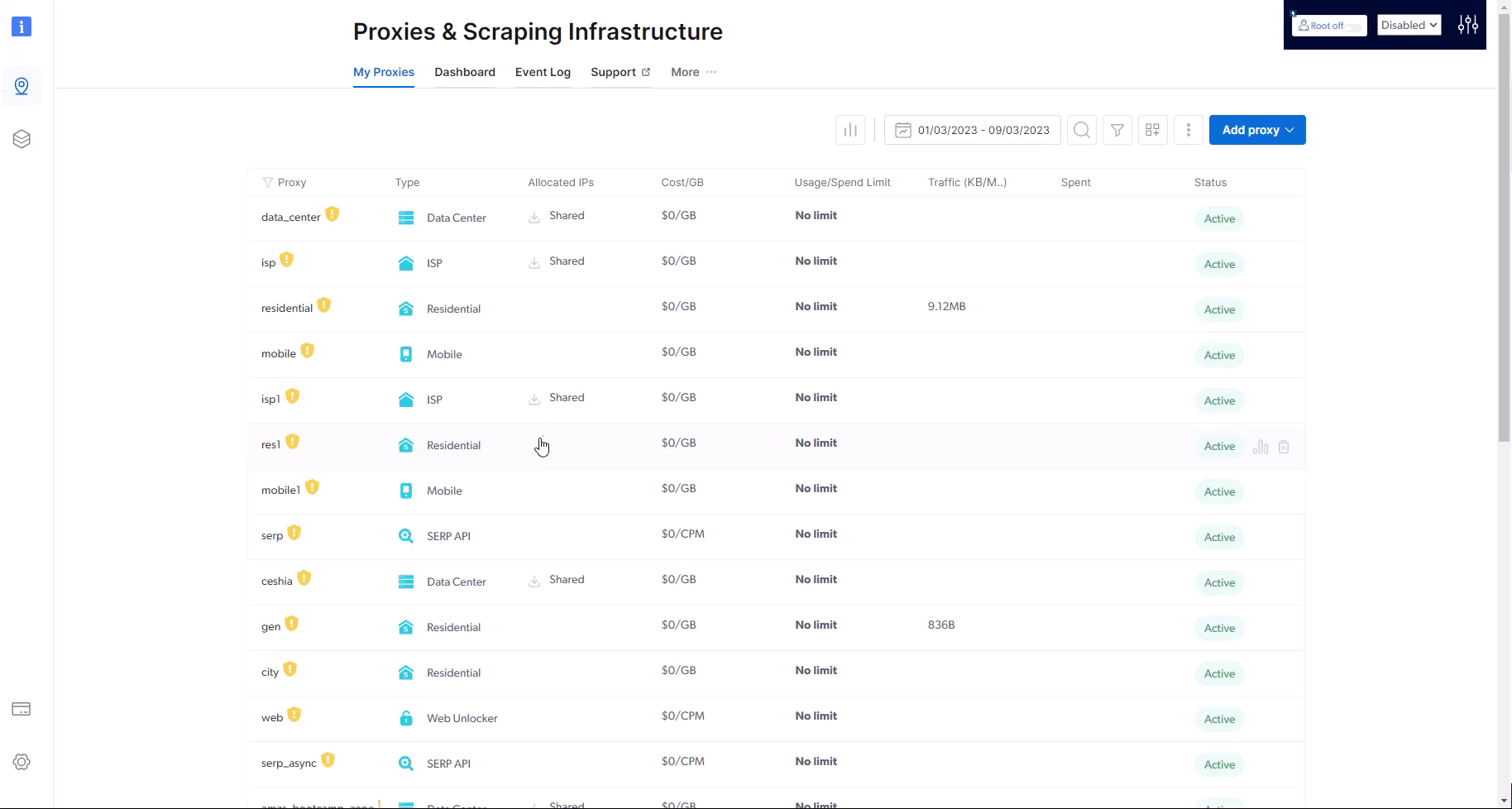
How to integrate a proxy into 3rd party software?
How to integrate a proxy into 3rd party software?
How to target a Specific Country?
How to target a Specific Country?
\-country flag, after your zone’s name in the request, followed by the 2-letter ISO code for that country.In the example below: We added \-country-us to our request, so we will send a request originating from the United States (“us”).How to target a Specific City in datacenter and ISP proxy networks?
How to target a Specific City in datacenter and ISP proxy networks?
Where does Bright Data have proxies?
Where does Bright Data have proxies?
- Iran
- Iraq
- Syria
- Lebanon
- Palestine
- North Korea
- Cuba
- Sudan
- Crimea region of Russia
How to view the proxy event log?
How to view the proxy event log?
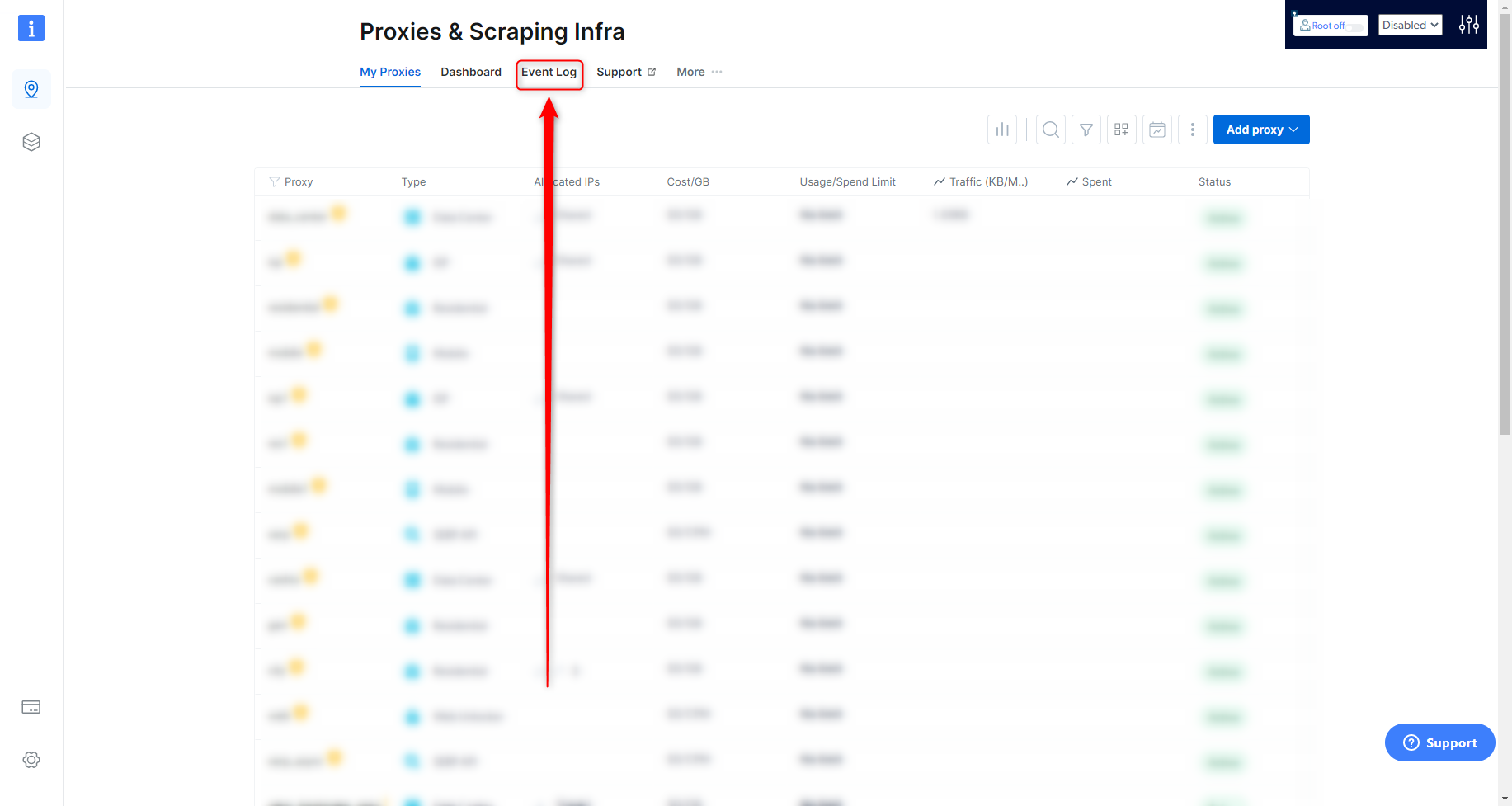
- Date: Time and date of the request
- Zone: What Zone was used for the request
- Source IP: What IP the request was made from
- URL: The target site of the request
-
Result: Success or Fail of the request
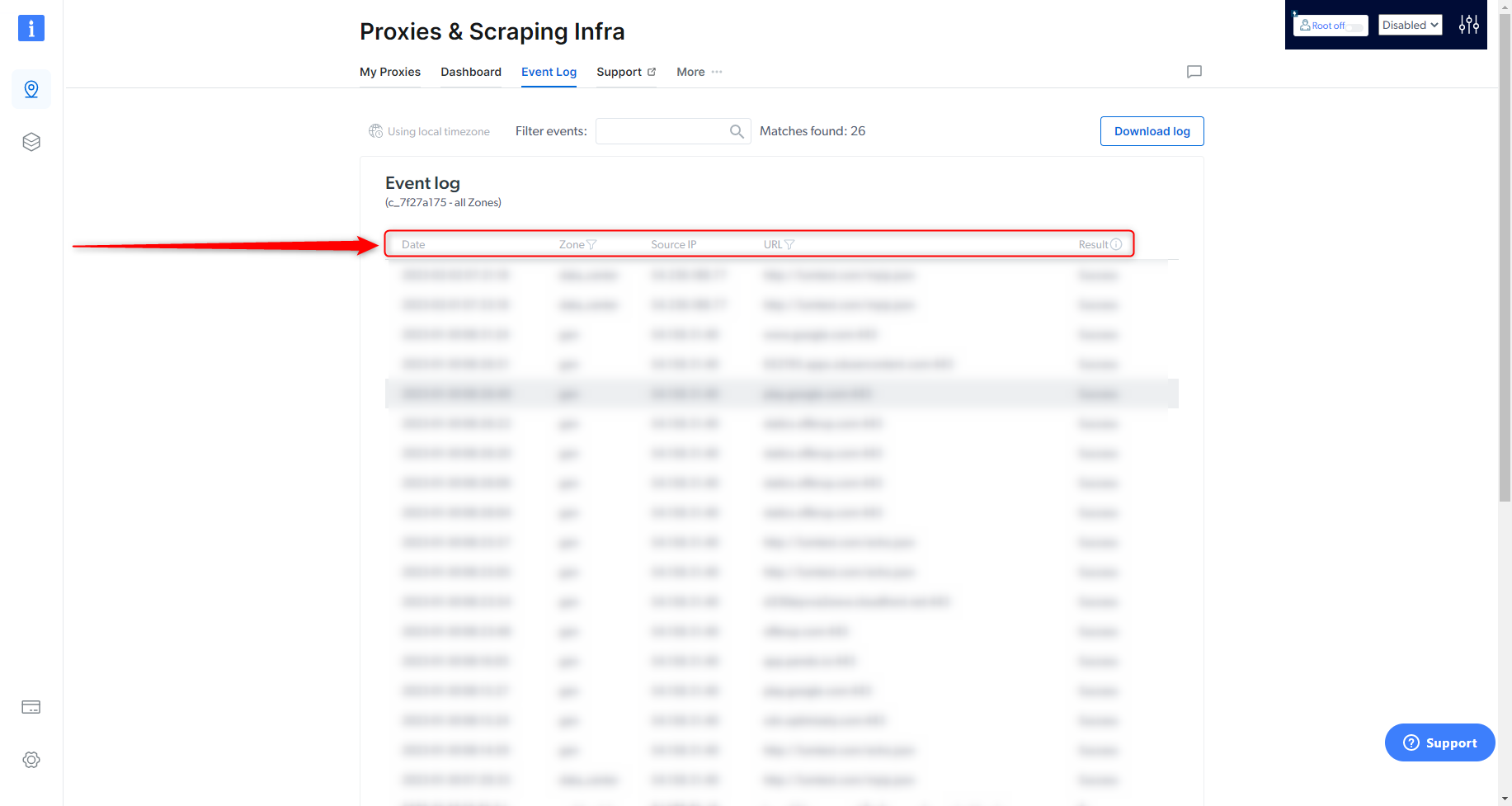
How to enable automatic IP fallbacks? (formerly 100% uptime)
How to enable automatic IP fallbacks? (formerly 100% uptime)
- If a specific IP is targeted in your request we will not assign a fallback IP to it
- Automatic Failover will not interrupt a live connection. If the fallback is needed, it will play in once the next connection is established
How to enable Automatic Failover for proxies?
How to enable Automatic Failover for proxies?
How to keep using the same IP in multiple requests?
How to keep using the same IP in multiple requests?
- This can be done by adding the session flag to the proxy username:
- Session ID can be any random string/counter: requests with the same session string will use the same Proxy Peer (as long as possible); requests with different session strings will be assigned different Proxy Peers.
- To force an IP change, just modify the session ID
- If an assigned Proxy Peer(exit node IP) becomes unavailable, the Super Proxy will return an error “502 - No peers available” for the first request and then on the second request the super proxy will assign a new peer even if you do not change the session ID.
- The Session IP is kept persistent for up to 1 minute of idle time. After a minute with no requests, the IP is released back to the pool.
To keep this Session/IP for longer, send a tiny keep-alive request every 30 seconds, to prevent this session from becoming idle for over a minute.
This request may be anything small, such as /favicon.ico, or even a request that returns 404 (as long as the web server does not disconnect the socket due to this request). - If you have multiple Clients and would like to ignore your Clients source IP (which is used together with your session ID to create a session), then you want to use a global session then add
glob\_as a prefix to your session:
How to see supported Ports & Protocols?
How to see supported Ports & Protocols?
Examples of ports that require Bright Data compliance review before activation:
| Port | Protocol |
|---|---|
| 8443 | HTTP |
| 8243 | HTTPS |
- Go to your zone’s settings (it will open on the “configuration” tab by default, if not, please click it)
- Scroll down to “advanced options” and click it
- Enable “ports”
- Input the port numbers you would like to get approved
-
Fill out the form and wait for our compliance team to contact you and approve the request
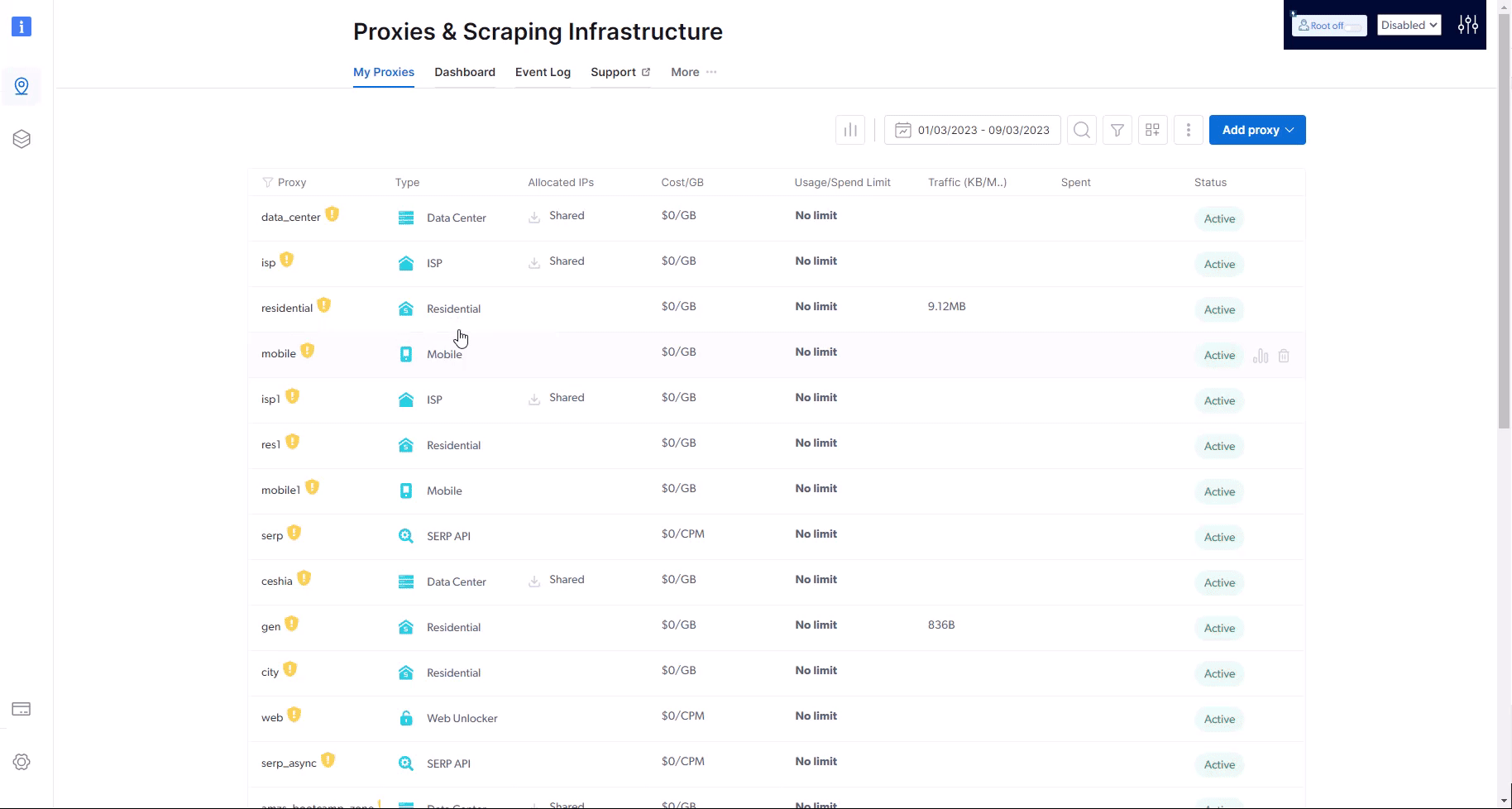
How to target specific OS?
How to target specific OS?
How to refresh IPs Allocated to Your Zone?
How to refresh IPs Allocated to Your Zone?
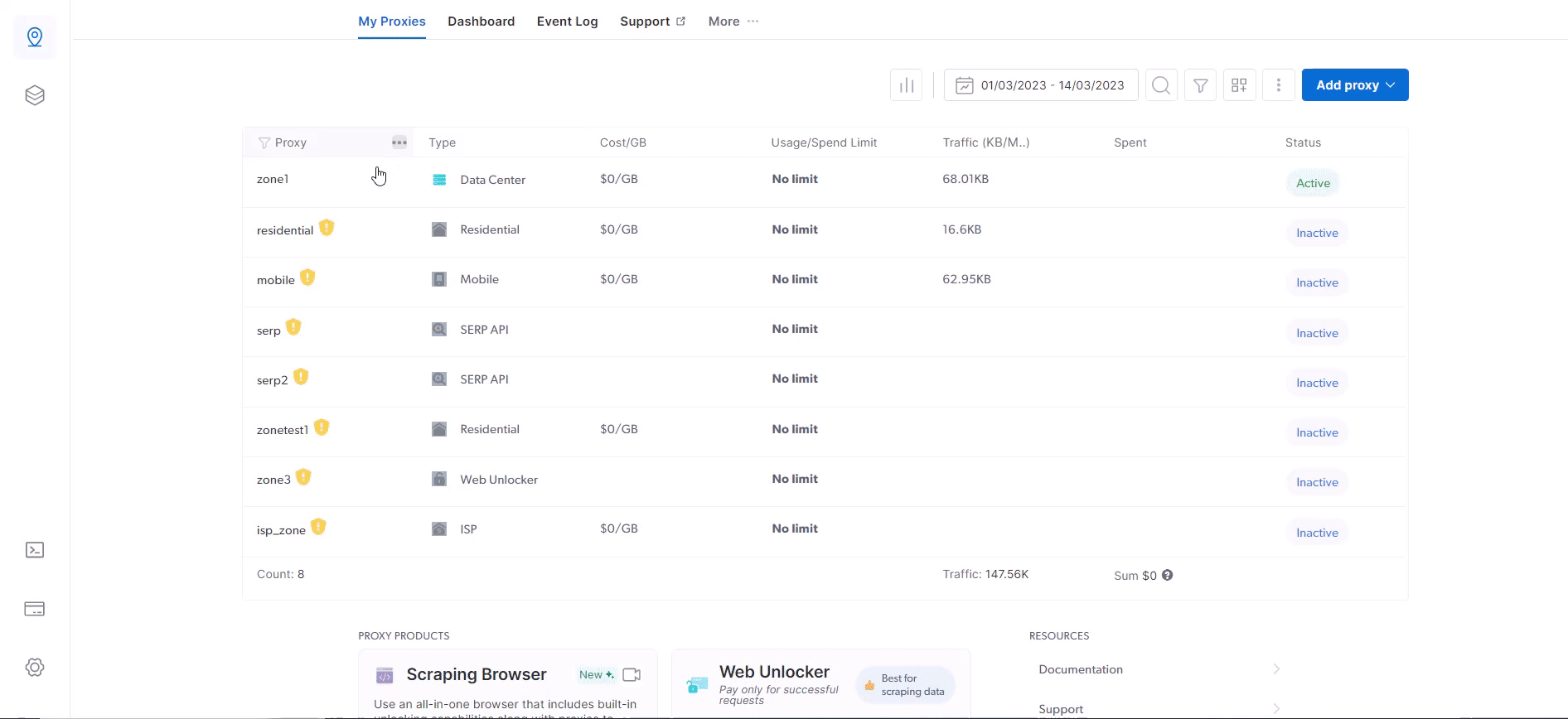
How to use a specific IP?
How to use a specific IP?
- Send a test request with a ‘—verbose’ or ‘-v’ option added (this will turn on verbose logging)
-
Locate the x-brd-ip response header and copy its value

- Add the -ip- flag to your request, after your zone’s name and use the hashed IP value copied in the previous step
- Send a test request, and review the response
How to target an ASN specific IP?
How to target an ASN specific IP?
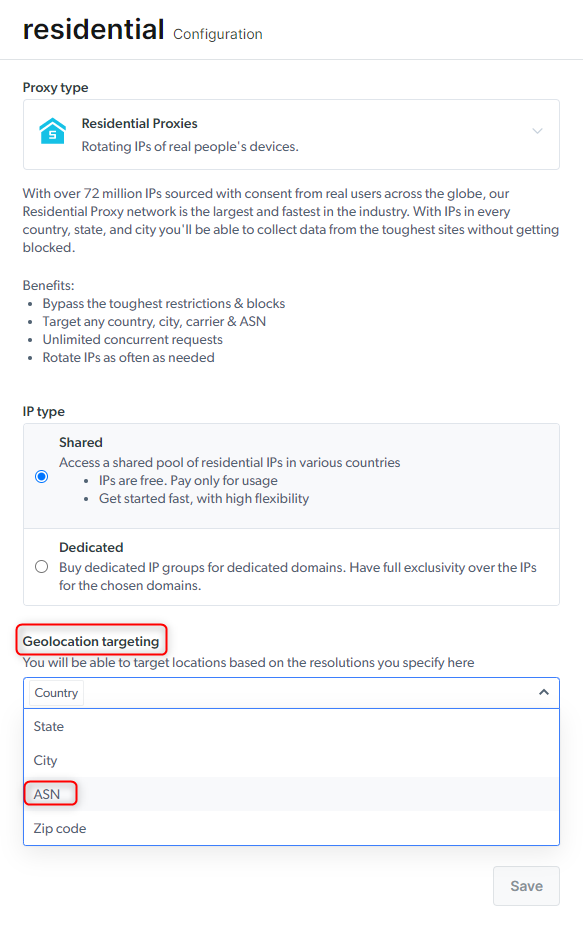
and be integrated when using the Residential proxies. For example:
How to Target Residential IP groups (gIPs)?
How to Target Residential IP groups (gIPs)?
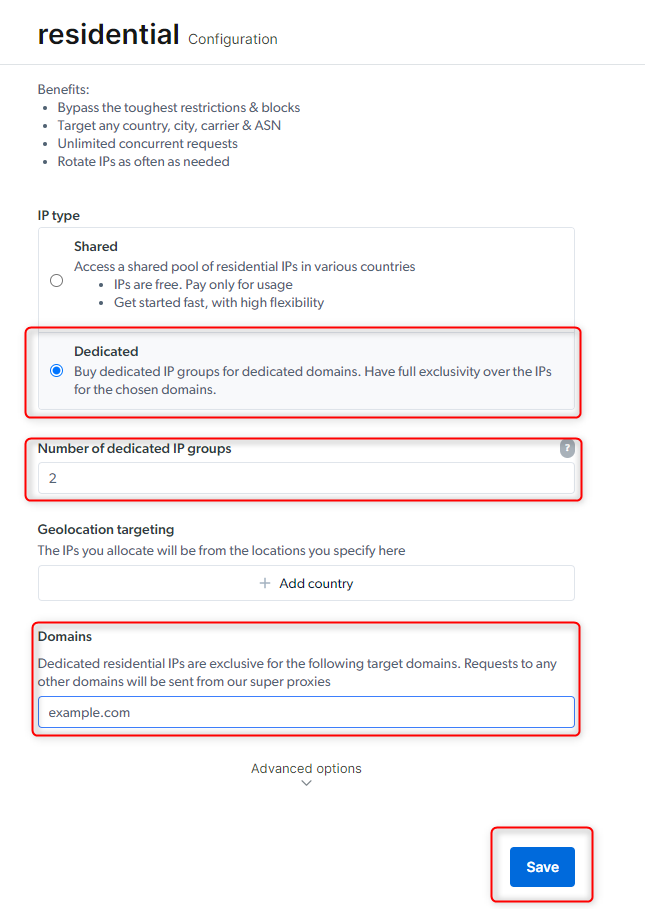
a list of hash values that represent group IPs.
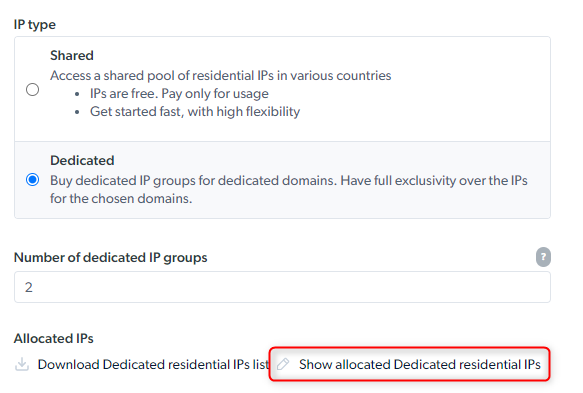
How to browse Chinese sites by using Chinese Residentials IPs
How to browse Chinese sites by using Chinese Residentials IPs
Targeting Chinese Residential IP peers is enough:
Carrier-specific Proxy peer IP
Carrier-specific Proxy peer IP
- You can choose to use a specific carrier from this list:
- For Example
About geolocation databases, and how to check the proxy IP information?
About geolocation databases, and how to check the proxy IP information?
Which Bright Data products are best for scraping search engines (SERPs)?
Which Bright Data products are best for scraping search engines (SERPs)?
For single-step scraping:
SERP API is the ideal product for targeting SERPs as it has a guaranteed success rate (pay only for success) with active unlocking, automatically chooses the best proxies, customizes headers, fingerprinting, solves CAPTCHAs, and more.For multi-step scraping (playwright/puppeteer/selenium):
Browser API is the ideal product as it is our fully cloud-hosted browser designed to help you easily focus on your multi-step data collection while we take care of the full proxy and unblocking infrastructure for you, including CAPTCHA solving.Can I target Google SERPs from the Residential, Datacenter, or ISP Proxy network?
Can I target Google SERPs from the Residential, Datacenter, or ISP Proxy network?
Can I Send requests to IPs and not domain name?
Can I Send requests to IPs and not domain name?
Requests using URL format such as 1.1.1.1:443 will be executed using the super proxy server, not the proxy peer IP.Example of a request using the super proxy:
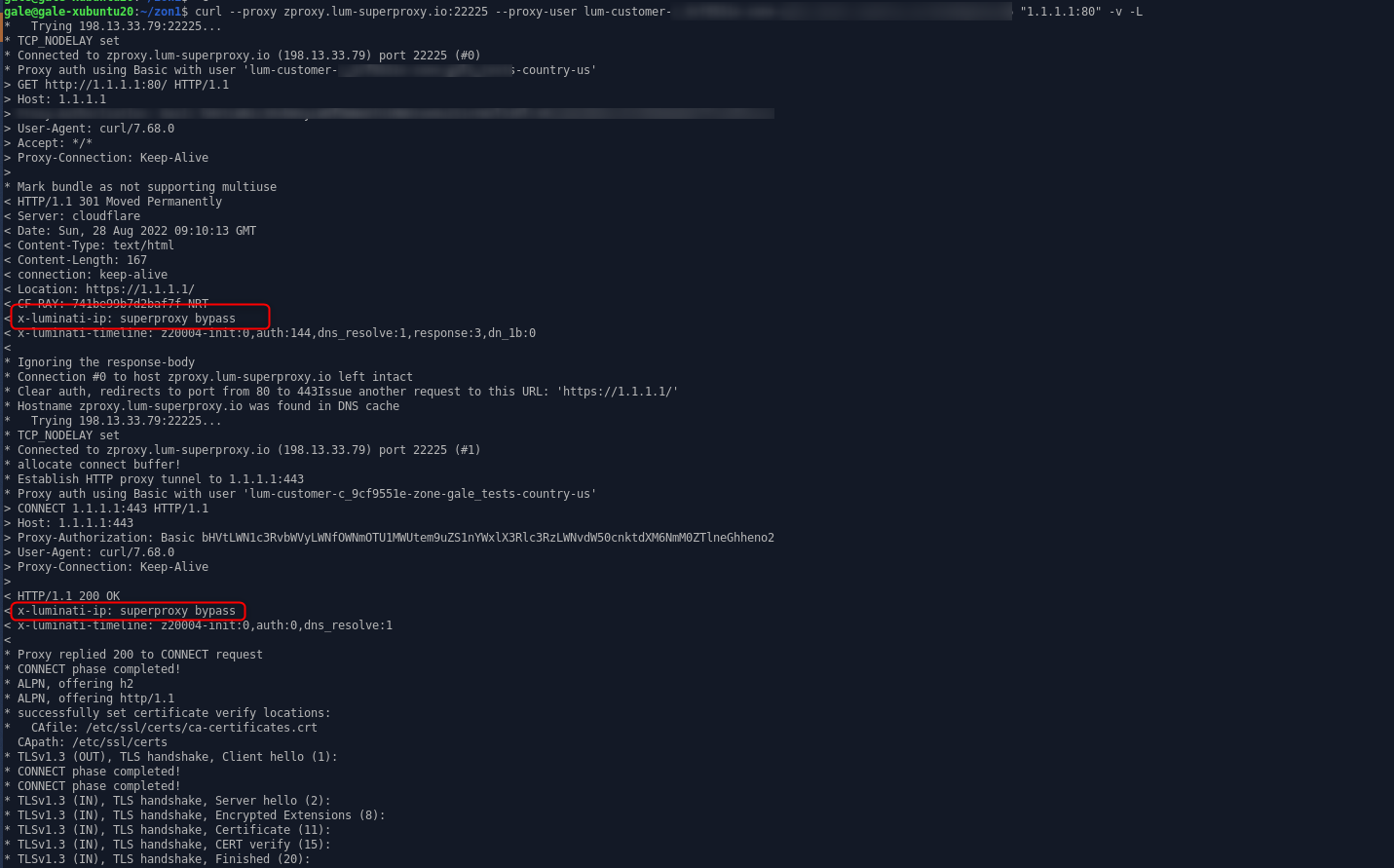
Can I use port 25 or any other SMTP port, or send an email by using the proxy IP?
Can I use port 25 or any other SMTP port, or send an email by using the proxy IP?
What is the cost for refreshing Datacenter IPs?
What is the cost for refreshing Datacenter IPs?
- Refreshing dedicated data-center IPs: $0.5/refresh/IP
- Refreshing dedicated domain data-center IPs: $0.04/refresh/IP
- Refreshing shared data-center IPs: $0.02/refresh/IP
Does Bright Data support the Socks5 protocol?
Does Bright Data support the Socks5 protocol?
SOCKS5 protocol, with a default port 22228 assigned for SOCKS5 communication.See here for full SOCKS5 configuration instructionsHow do I control from where the request is performed?
How do I control from where the request is performed?
- You can choose to perform the request from the super proxy directly instead of the IP of the peer. In that case the IP of the request will be the one of the Super proxy. You will need to add ‘-direct’ to your request authorization string.
brd-customer-<customer_id>-zone-<zone_name>-direct
How do I refresh session (IP)?
How do I refresh session (IP)?
Can I request from Bright Data missing proxies for dedicated, unlimited datacenter and ISP?
Can I request from Bright Data missing proxies for dedicated, unlimited datacenter and ISP?
- Customer has qualified to place IP requests/orders . This permission is granted to existing, enterprise level customers only.
- IPs are dedicated to the customer (we do not allow ordering shared IPs).
- IPs are for datacenter or ISP only.
- A single specific country must be provided.
- Minimum order size is 100 proxies
When should I request for proxies in the future?
You can request for future delivery of proxy IPs if your account is qualified for placing requests.I tried to define a zone but Bright Data could not assign me all the proxies I wanted, what to do?
If during zone save you get a message that proxies are not available in a specific country, or only part of the amount you requested is availble, try to select more countries or change your country setting to allow us to find proxies for you.Once your request for missing proxies is placed, our team will attempt to provision the proxies. The acquiring and provisiong process usually takes up to 14 days. Once the proxies are ready, we will notify you. We encourage you to check again once every 2-3 days to see if inventory has refreshed and more proxies are available.How can I move proxies (IPs) from zone to zone?
How can I move proxies (IPs) from zone to zone?
Some of my IPs were replaced, why does this happen?
Some of my IPs were replaced, why does this happen?